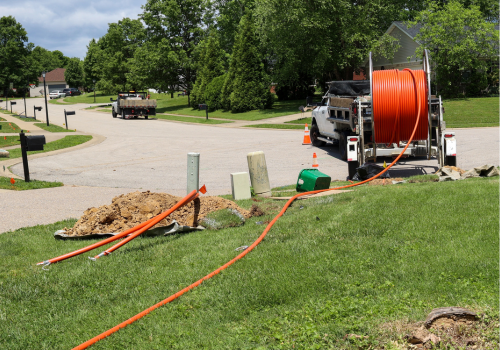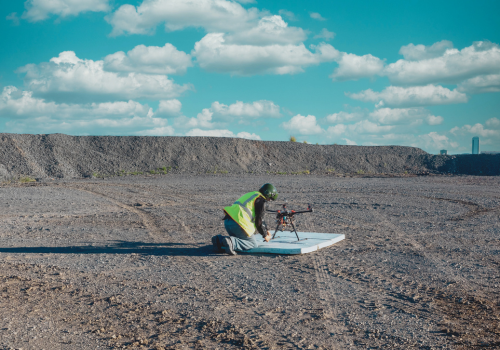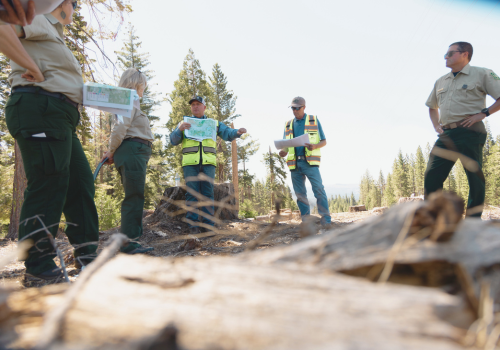Spending on infrastructure for power, water, wastewater, and telecom will continue to grow through the balance of 2024, driven by the public investment in water and wastewater as well as the energy transition.
Power Outlook
In its second-quarter outlook, FMI forecasts spending of $134 billion in the power sector in 2024, up 9% over 2023. This sector includes electricity as well as natural gas and oil.
Nationwide, the forecast for electricity demand increased from 2.6% to 4.7% growth over the next five years, as reflected in 2023 Federal Energy Regulatory Commission filings.
“Given the absurdly large power requirements of data centers, increased market share for electric vehicles, and a push to modernize the U.S. transmission network, this subsegment should remain strong for the next several years,” says Zack Fritz, Economist for Associated Builders & Contractors (ABC).
“A significant driver is building resiliency into the grid in the face of more extreme weather events,” says Daniel Shumate, Managing Director with FMI Capital Advisors, Inc. Efforts include installation of stronger poles, covered powerlines, and burying miles of powerlines in high wildfire risk areas.
Alex Carrick, Chief Economist of ConstructConnect, says that in addition to spending on grid resilience and electric cars, manufacturing is also transitioning to electric power. “Any company with an industrial process that uses heat is going to try to switch from fossil fuels over to electricity,” he says.
“Natural gas is a power source that—despite corporate pledges to the contrary—will be necessary to meet the increased power demand of the next decade,” explains Fritz. “We’re also increasingly an LNG exporter.” He expects moderate increases in natural gas-related projects as a result of rising demand for exports. However, the tale is different for oil. According to Fritz, oil-related construction spending has fallen 91% since the all-time high in 2014 and accounted for just 1.4% of private-sector power-related construction spending in 2023.
“It’s a replacement and service market,” says Schumate of the oil market. “It’s keeping up with inflation and not much else. There is limited new construction.”
Water and wastewater outlook
FMI forecasts spending of $30 billion in 2024 on water supply, up 8% over 2023. Federal investments are driving spending. The Infrastructure Investment and Jobs Act allocates $50 billion towards safe drinking water, including $15 billion in grants and loans to identify and replace lead service lines and an additional $11.7 billion to finance any drinking water infrastructure priority, including lead service line identification and replacement.
In February 2024, the EPA announced over $3.2 billion would be made available through the Drinking Water State Revolving Fund to expand access to clean drinking water across the country, bringing the total amount of funding announced under this category to $8.9 billion. The Department of the Interior’s Bureau of Reclamation is investing $1 billion from the Bipartisan Infrastructure Law to construct seven major Rural Water Projects to deliver new supplies of clean drinking water to rural communities.
Shumate believes that in the wake of some tragic events surrounding water quality in Flint Michigan and Jackson, Mississippi, the job of managing water utilities has moved “from keeping the water bill small, to keeping the water safe.” The EPA estimates that the U.S. needs $650 billion over the next 20 years to improve safe drinking water infrastructure.
Sewage and wastewater disposal spending will top $46 billion in 2024, according to the FMI Forecast, 10% higher than in 2023. FMI says the growth can be attributed to a recent wave of residential and manufacturing investment, domestic migration, a desire to improve resiliency, and the regulatory environment.
Carrick says he has never seen such a large number of water and wastewater projects mega projects, topping $1 billion, with higher costs driving up the cost of projects. For example, the Austin City Council recently approved contracts to complete design and construct significant enhancements and expansion of the Walnut Creek Wastewater Treatment Plant, which is projected to cost more than $1 billion. In California, a $4 billion large reservoir
“Construction spending for water and wastewater is surging,” says Fritz. “Spending in the category is up 56% since February 2020. For context, spending in the category increased just 61% from the start of 2002 (when the U.S. Census Bureau began tracking it) to the start of 2020.”
Communication outlook
The need for faster and more reliable networks to accommodate an increasingly connected world as well as the growing use of artificial intelligence (AI), will increase communication spending by 5% in 2024, according to FMI’s forecast. The Broadband Equity, Access, and Deployment (BEAD) Program, also provides $42.45 billion to expand high-speed internet access by funding planning, infrastructure deployment, and adoption programs.
Shumate believes telecom is the one sector where funds have been somewhat delayed in 2024. “It’s the challenge of the federal funds impacting the market, he says.
Election impact on the forecast?
With a November election on the horizon, there’s no doubt utilities and utility contractors are concerned with how the outcome will impact their plans.
Shumate believes bipartisanship will prevail when it comes to infrastructure investment. “There’s a new industrialization movement inside of the U.S. that is emphasizing our infrastructure, the things that impact our ability to compete with the world,” he says. The two points on which both sides generally agree are not wanting to get beat by China and making sure the U.S. remains competitive.
Labor’s impact on the utility infrastructure forecast
“The one thing that limits contractors is people,” says Shumate, “and that is a long-term structural problem that is not going to get fixed quickly.”
Carrick agrees that labor is a huge challenge in almost every industry and construction in particular. “The amount of hiring is not keeping up with openings,” he says.
In summary, the mid-year outlook for utility infrastructure spending remains very positive for electric power, water and wastewater, communications, and even natural gas. The biggest potential threat is being able to access the workforce and technology to get the job done.
Subscribe to The Utility Expo monthly newsletter to receive more industry insights like this.
Read Next
Economic Forecast and Outlook for U.S. Utilities in 2024












